As part of the design team for the Interdisciplinary Life Sciences Building at the University of Maryland Baltimore County, the landscape architect was responsible for helping nestle the 131,000 SF research and teaching building into one of the most active corridors on campus. The site is bordered on the north by The Commons, the hub of student life on campus, a parking garage and vehicular drop-off to the east, a preserved woodland to the south, and the main campus quad to the west. Central to the design is integrating these previously isolated functions in a space that promotes student social interaction and learning in a nature-inspired environment.
University of Maryland, Baltimore County
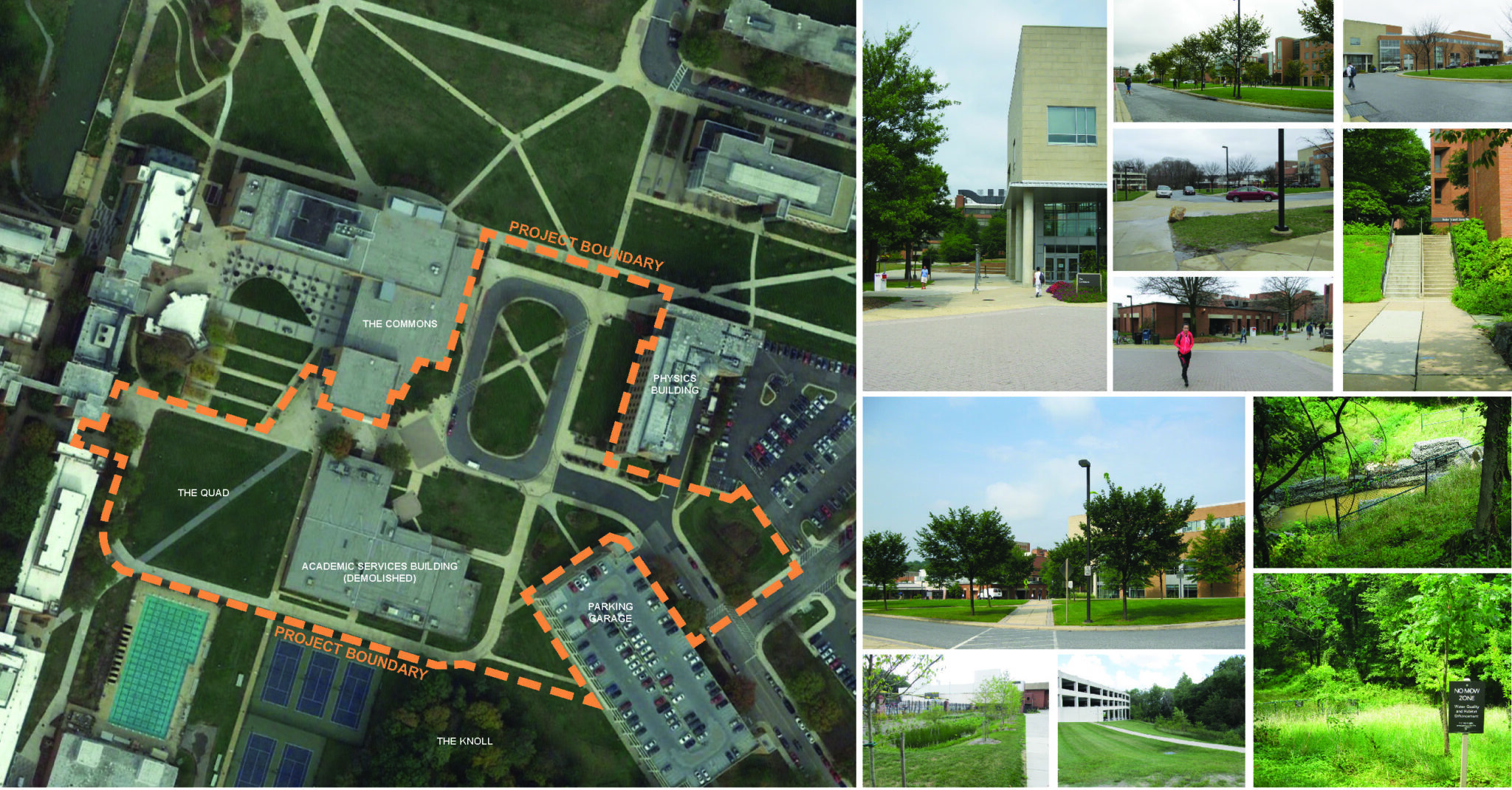
EXISTING CONDITIONS | The project leverages a prime location on two sides of the existing student union building to create a new pedestrian plaza while dealing with the needs associated with previously vehicular focused location.
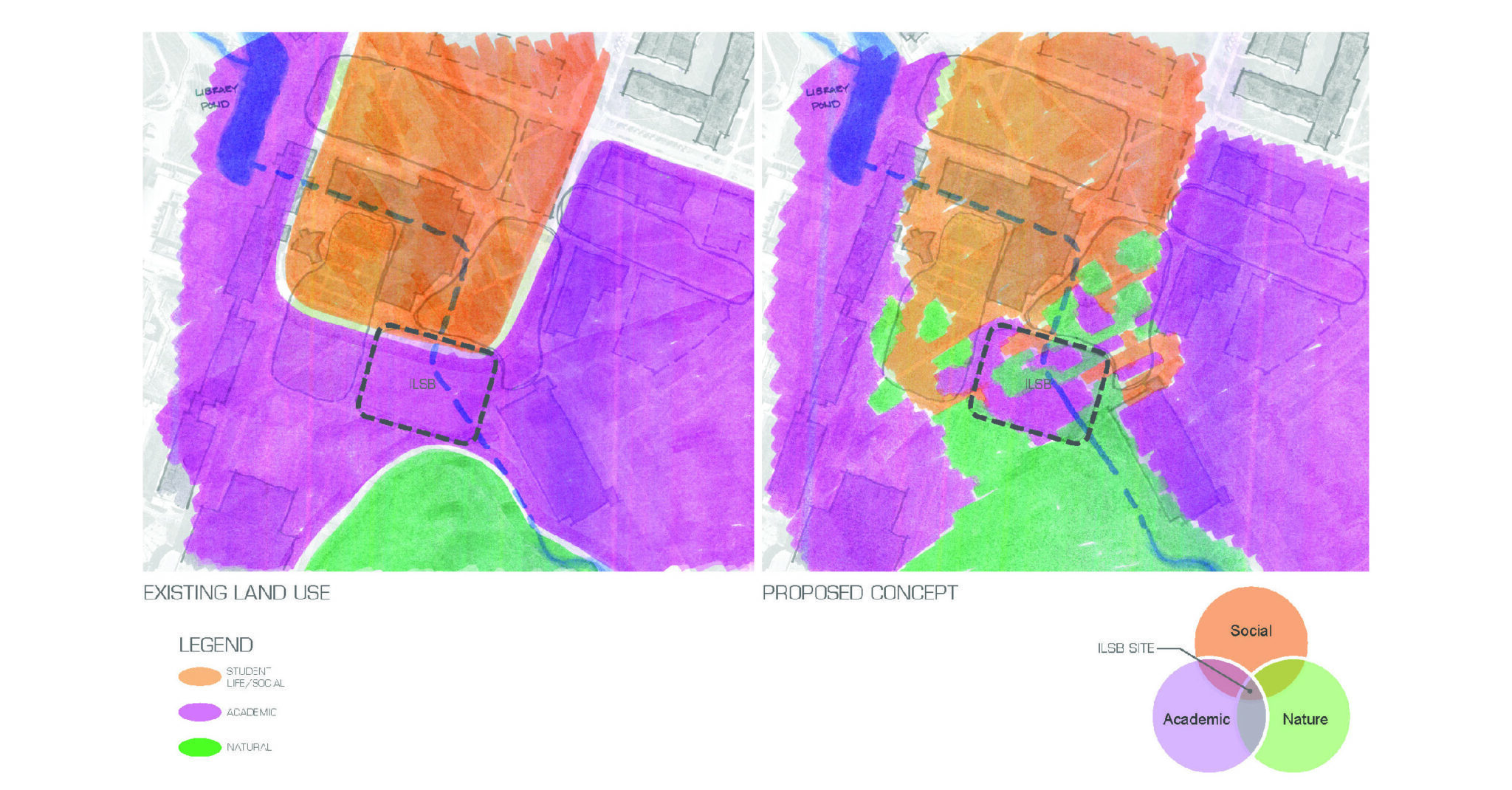
INTEGRATING CAMPUS RELATIONSHIPS | An early priority for the project design was to integrate the previously isolated social, academic and natural functions surrounding the site. The resulting blend is a plaza that promotes student interaction and learning in a nature-inspired environment.
CHARACTER DRIVEN RESEARCH | The design of the site was crafted to reflect the natural elements of woods, water, and community, which were used as inspiration for its shape, function, and selection of plants and materials.
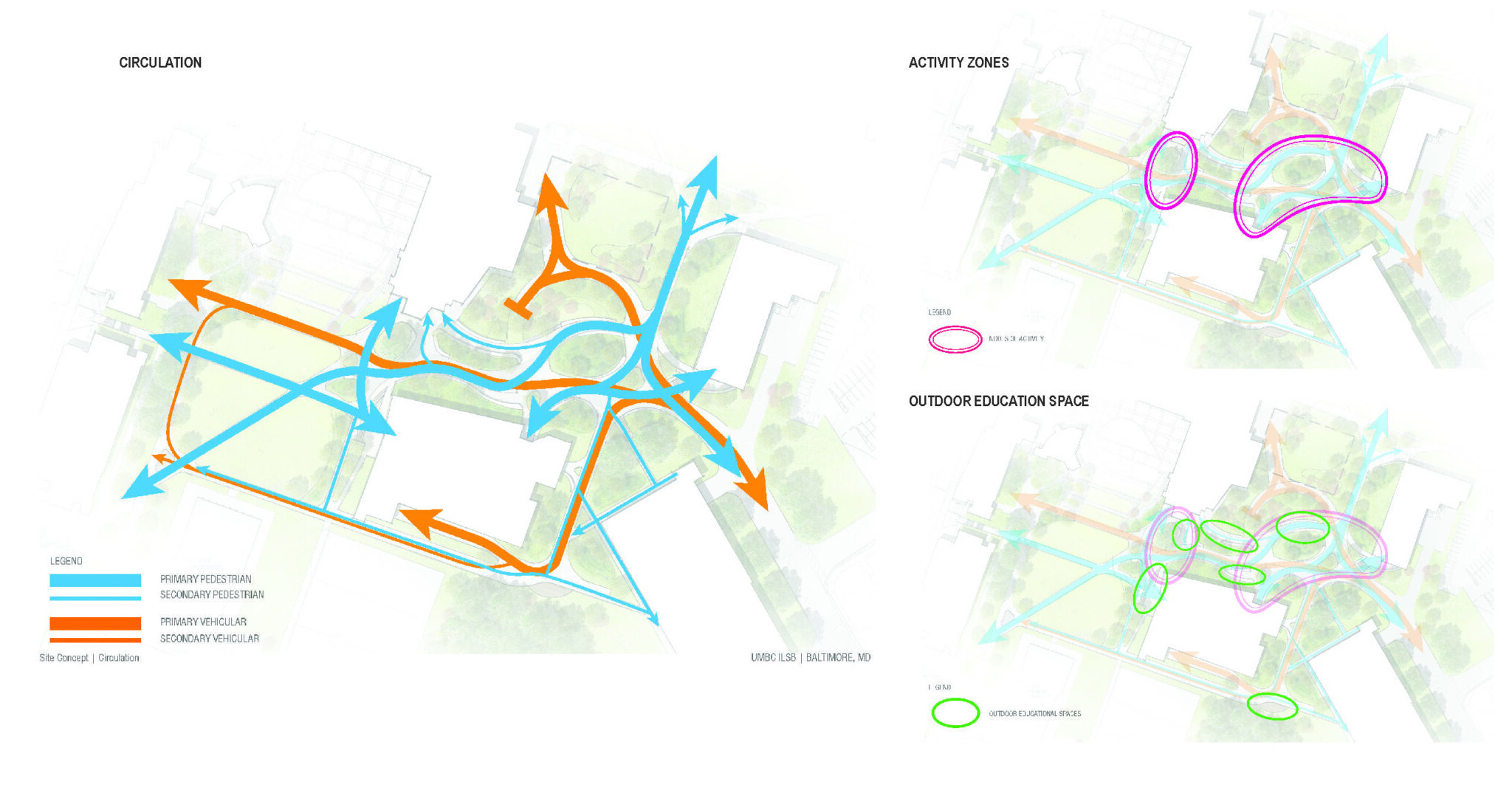
CAPITALIZING ON FOOT TRAFFIC | Activity zones and outdoor learning spaces are strategically placed along high-traffic areas to capitalize on foot traffic and foster a sense of community. All vehicular traffic allowed on-site is emergency or service related and is accommodated on predation-oriented routes.
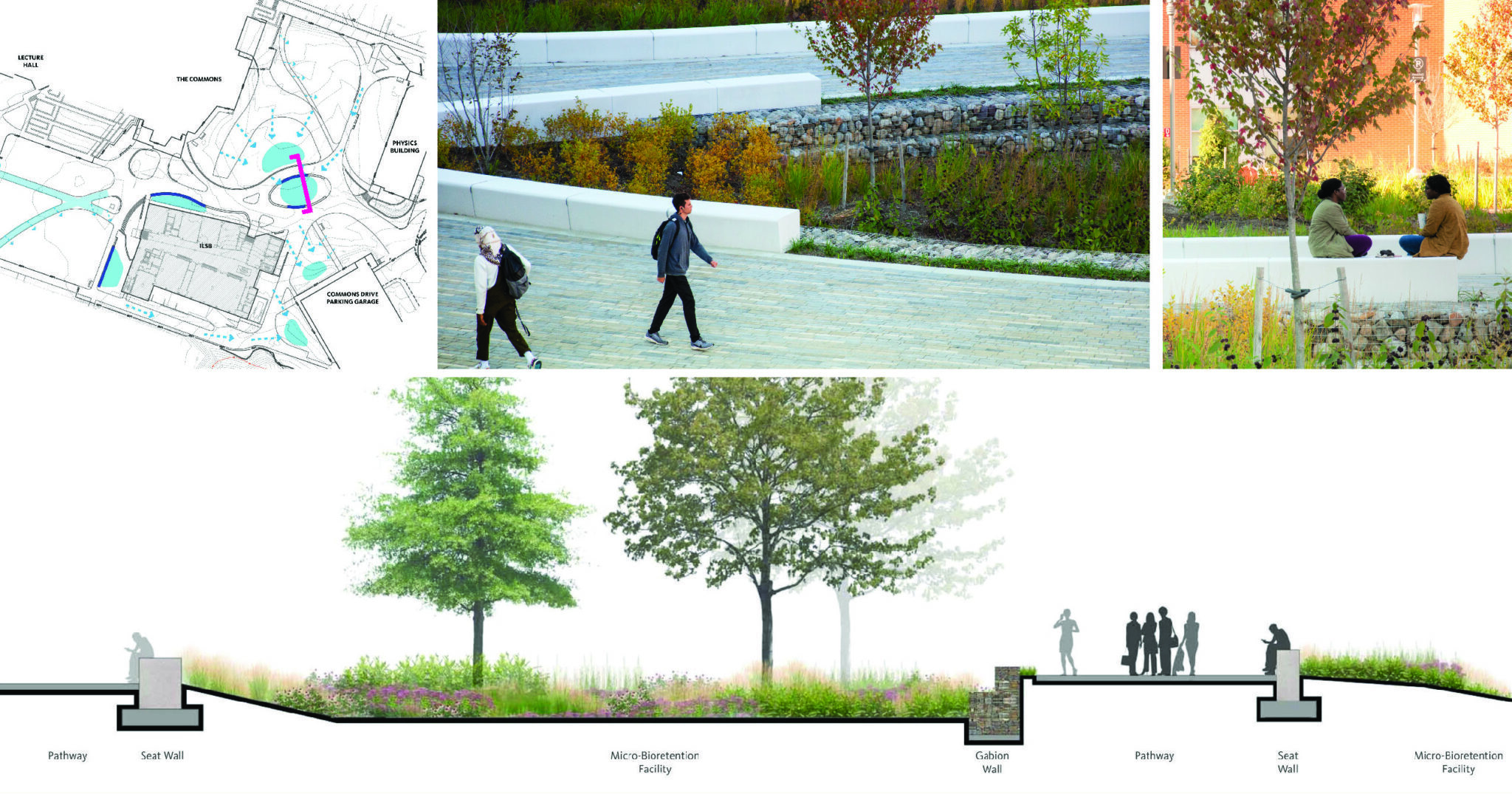
CONNECTING TO NATURE | Stormwater management is seamlessly integrated into the overall design, adding environmental function to the landscape while also elevating the student experience of nature on campus. As a contrast to the traditional campus lawn, drifts of native plants provide the backdrop to causal student interaction.
A DYNAMIC LANDSCAPE | The network of generous curvilinear paths allows students to take multiple routes through the plaza. This phenomenon is complemented by the use of regionally native plants that change in color and texture throughout the season offering ever-new experiences.
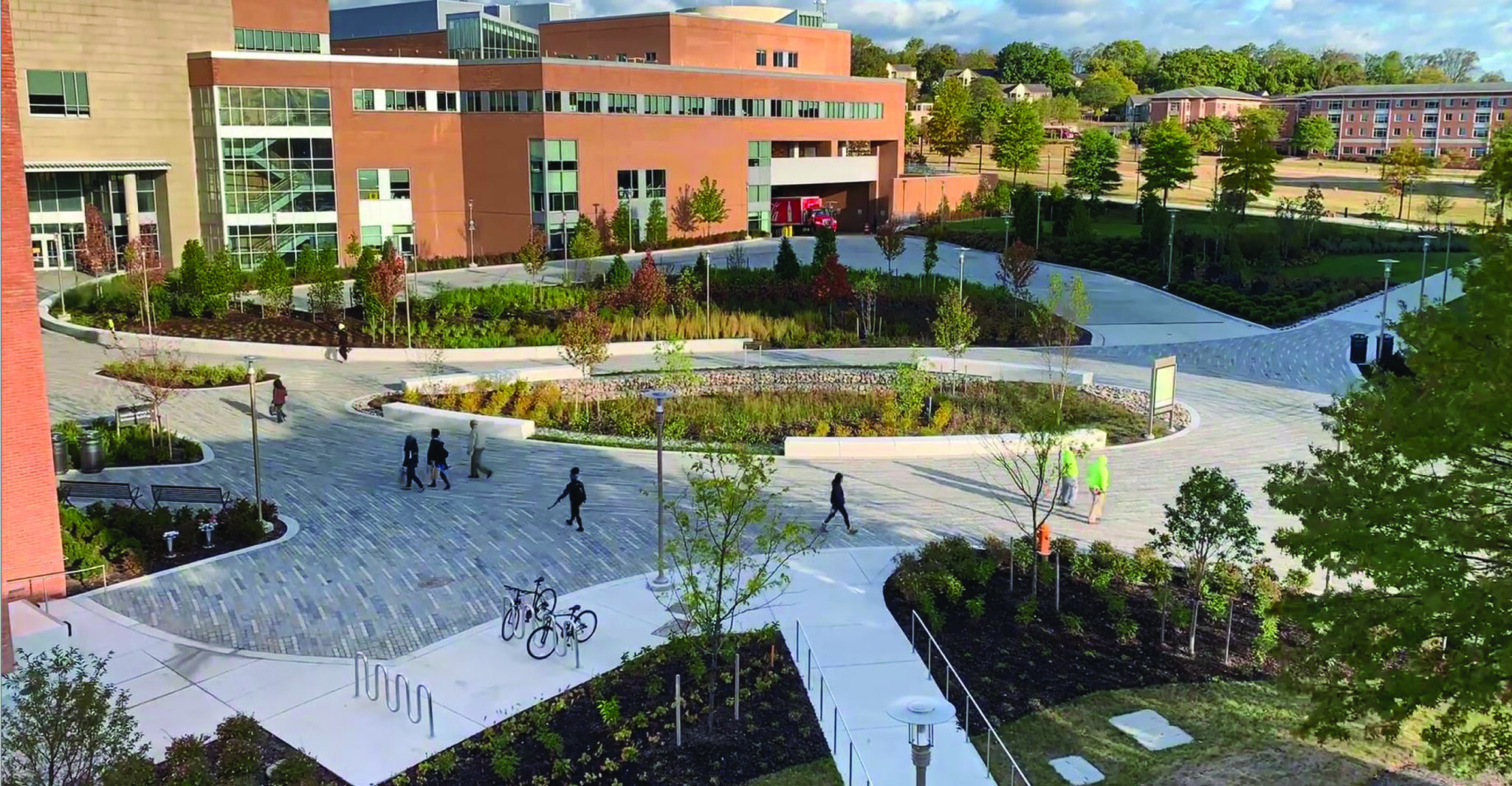
CAMPUS CONNECTIONS | The Grove Plaza, an extension of the new ILSB building, connects several key campus areas. It serves as a main entry point for students and faculty coming from commuter lots, housing, and new building entrances.
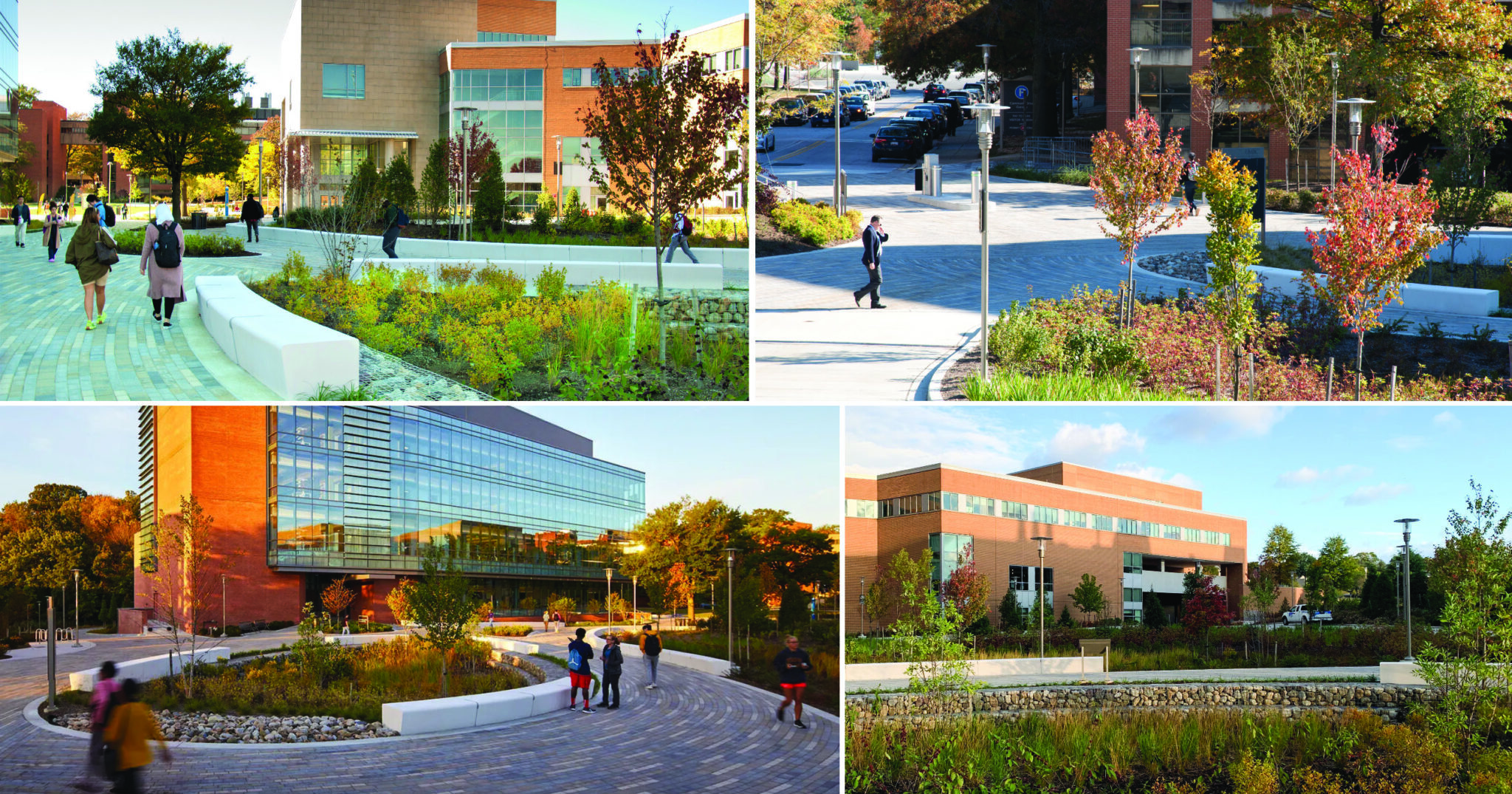
PEDESTRIAN FIRST | The existing car-centric drop-off circle is revamped into a shared pedestrian area by rerouting vehicular traffic and installing security bollards for traffic regulation. A sinuous field of paving guides pedestrian circulation through the site in a motion that aims to connect minds with the life-giving processes of water.
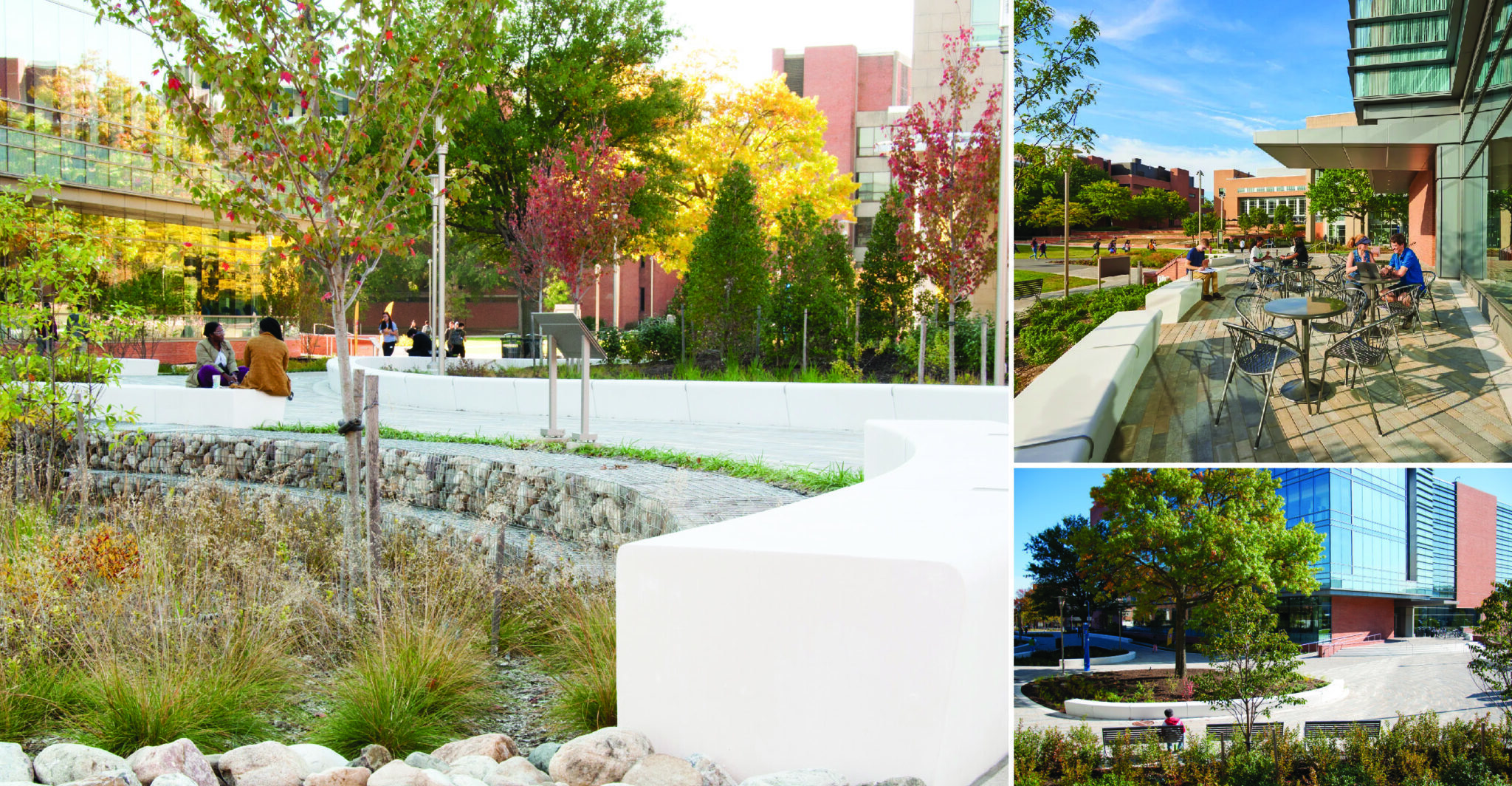
ENCOURAGING LINGERING | Various seating options cater to a variety of casual and formal interactions. For example, backless benches provide a spot for students to rest and engage in brief conversations, while benches and seated tables offer spaces for studying, eating, and extend sitting.
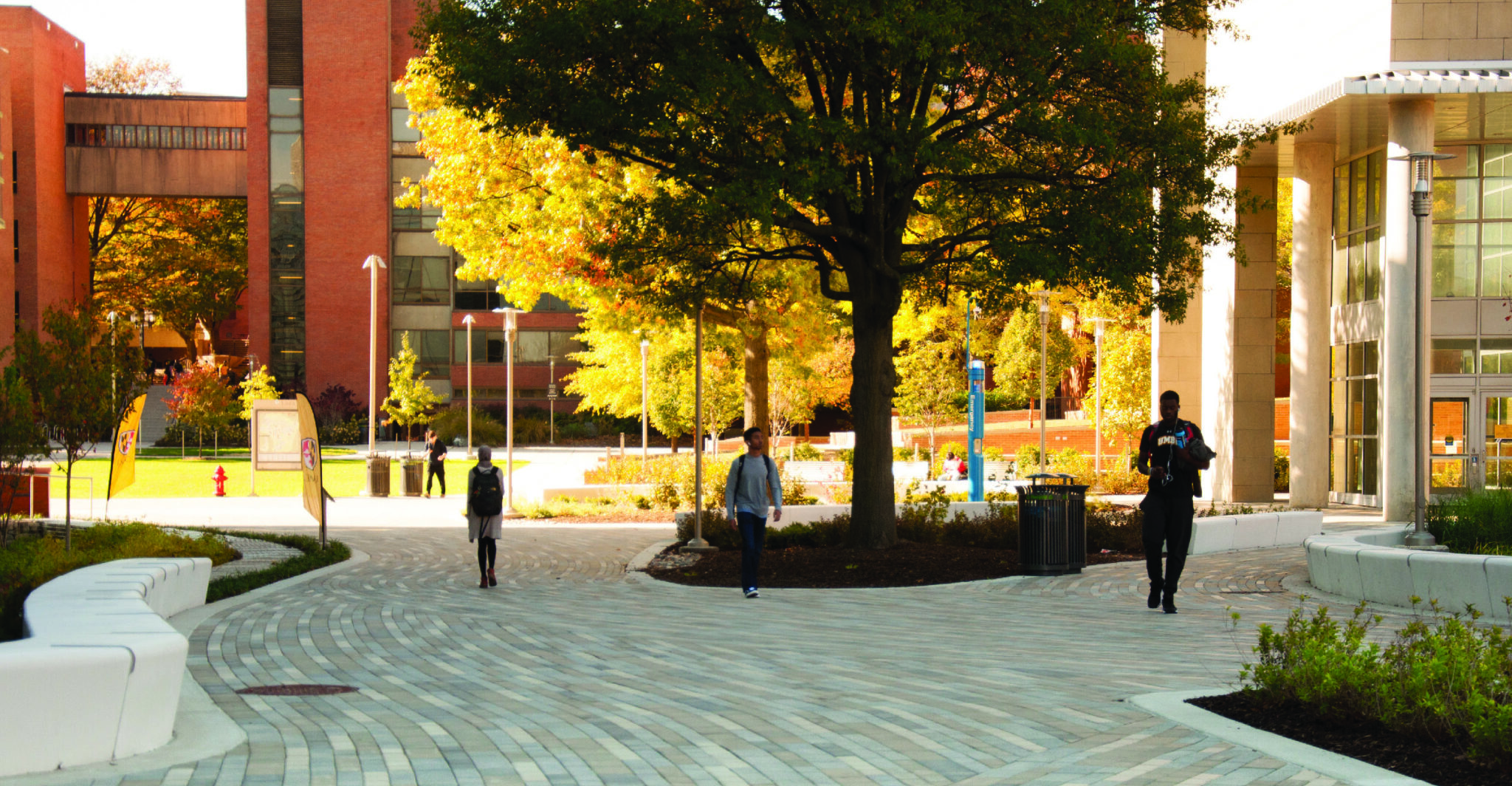
TREE PRESERVATION | It was of utmost importance to the client and the landscape architect to incorporate two stately mature oak trees into the design, preserving their natural beauty and canopy for seating, while also carefully working around them to ensure their continued survival.
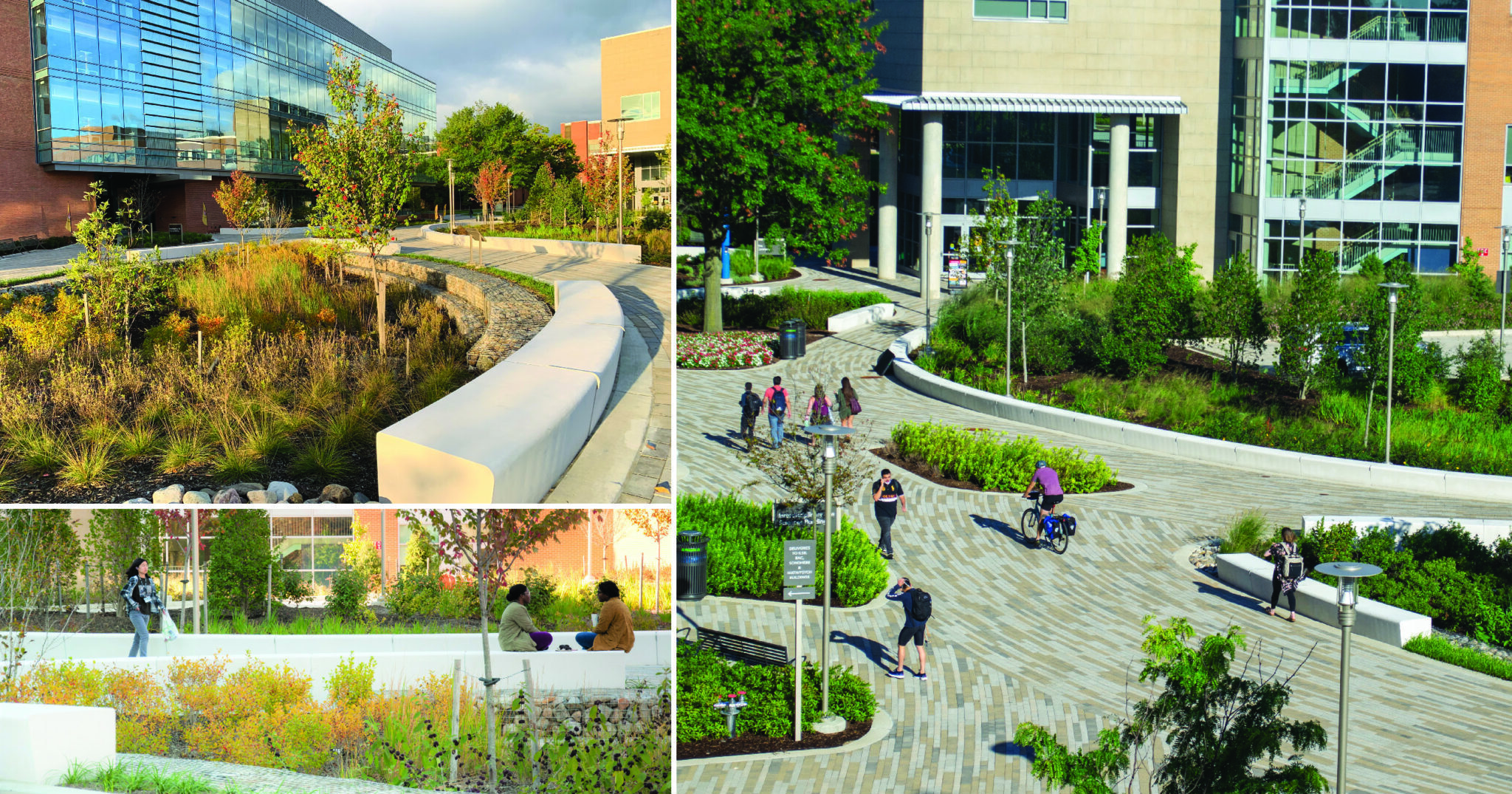
BAY-FRIENDLY LANDSCAPE | Integrated stormwater features not only provide a visually pleasing environment for relaxation, but also play an important role in protecting the Chesapeake watershed and furthering the university’s commitment to environmental sustainability.
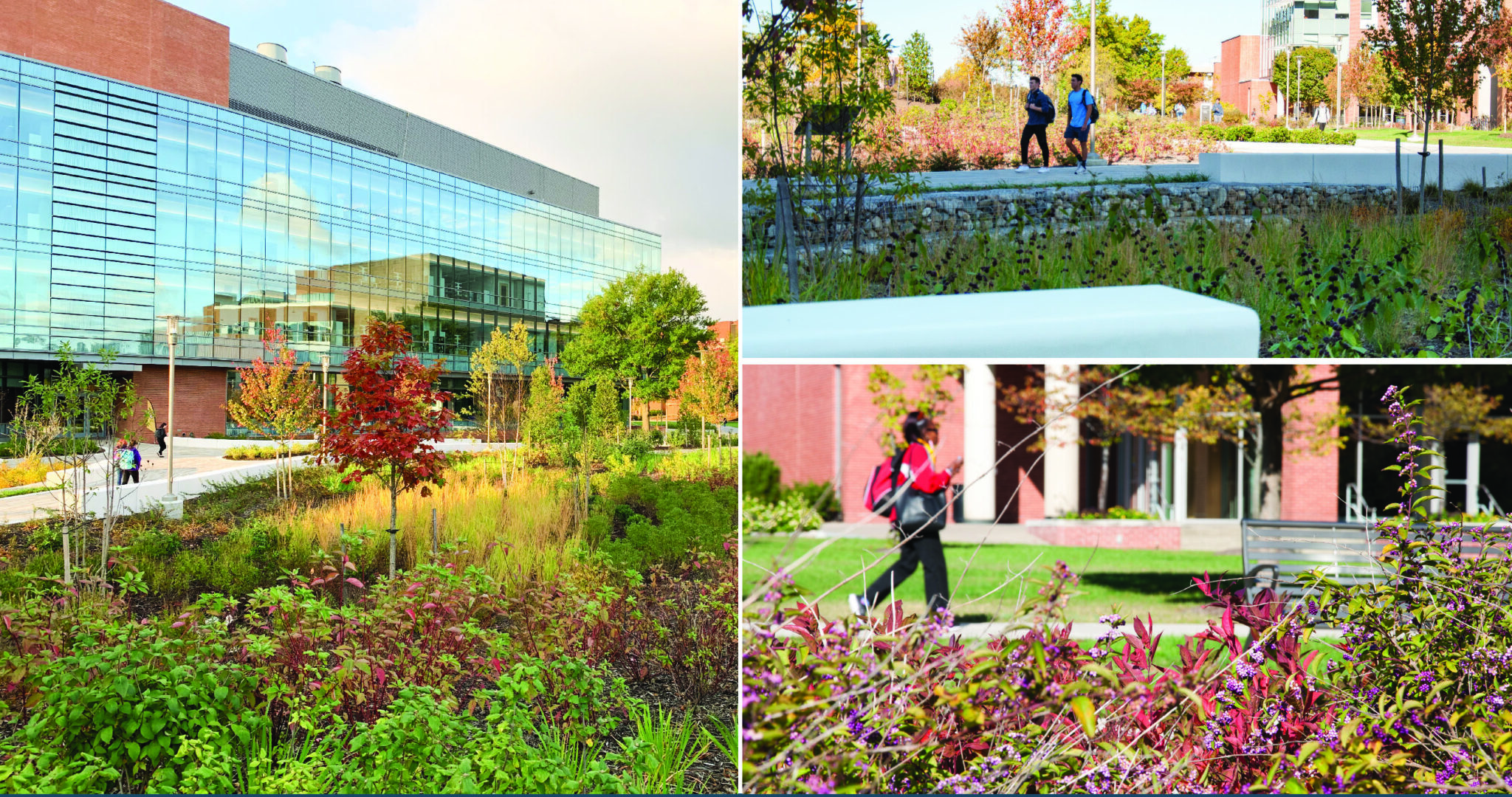
CREATING THRIVING HABITAT | What was previously a mono-culture of lawn has been transformed into a diverse and thriving habitat for birds, insects and other animals, featuring a variety of native plantings that provide visual interest and beauty throughout the year.
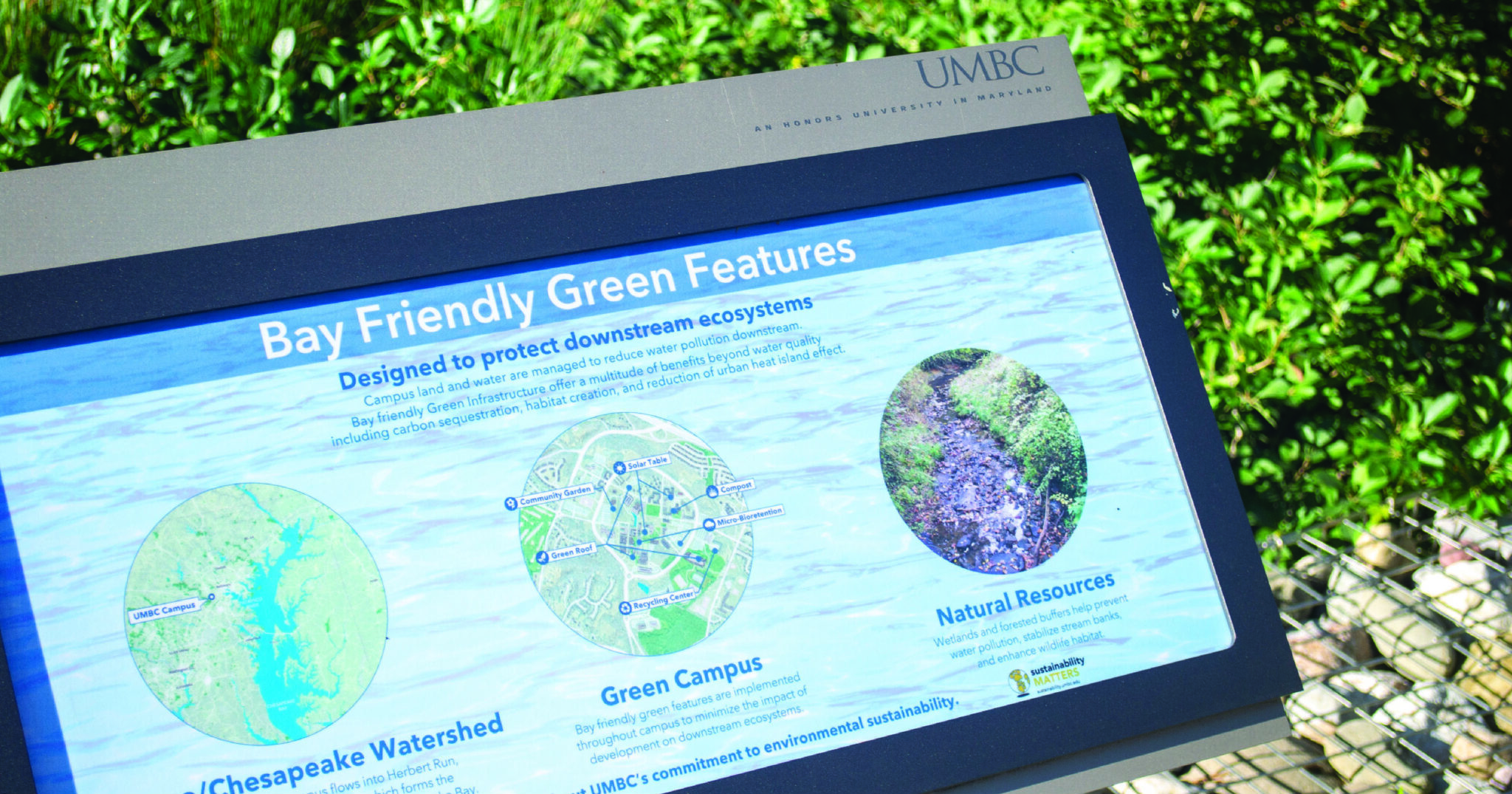
INTERPRETIVE SIGNAGE | Interpretive signage is strategically placed throughout the site to educate visitors about the various green features, their environmental benefits, and how they fit into solving environmental issues surrounding Chesapeake Bay and the college’s broader Green Campus initiative.